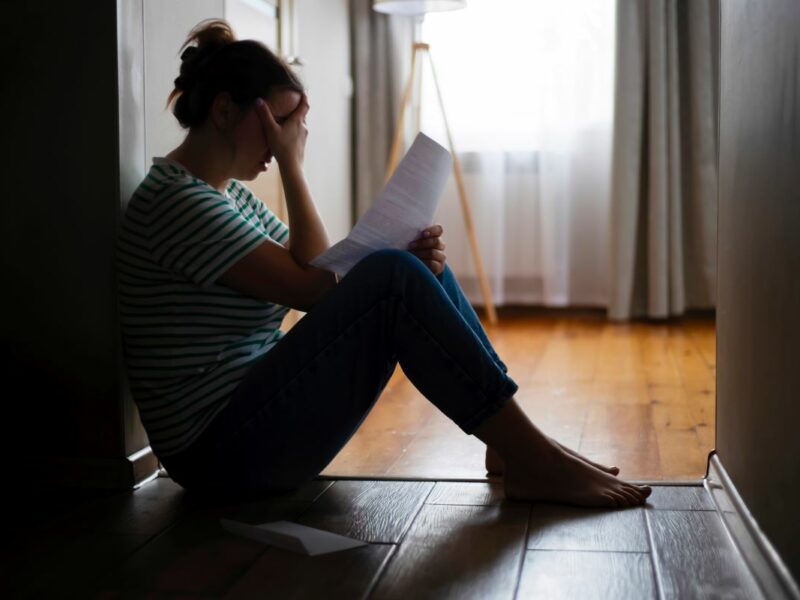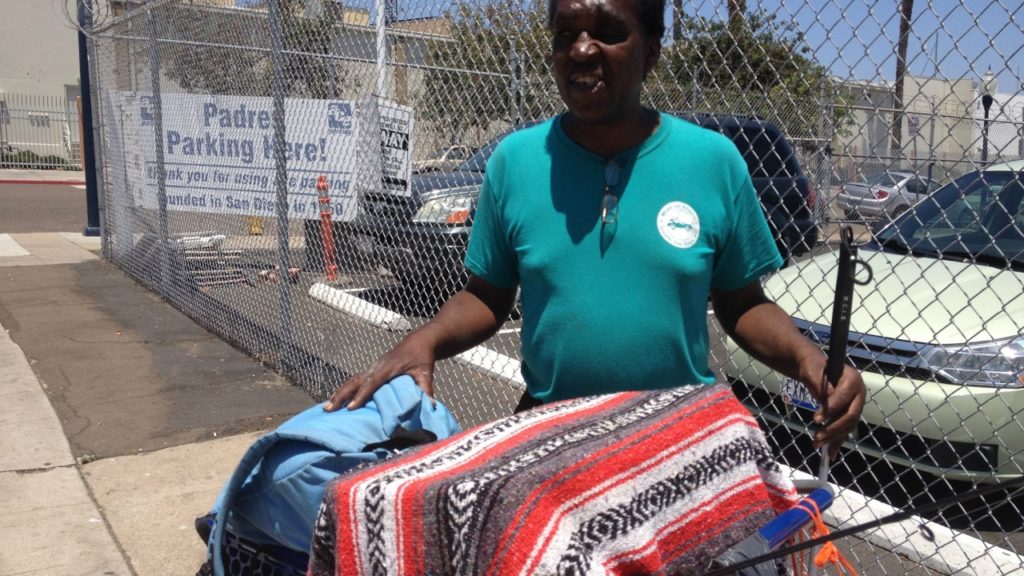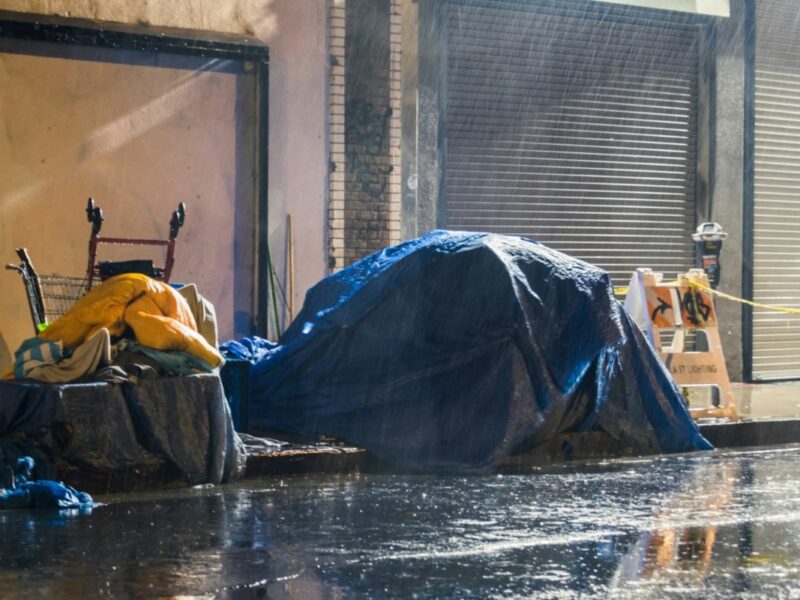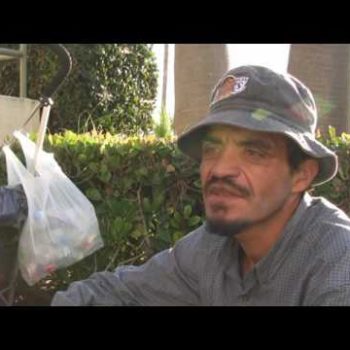If you’ve ever ventured into a region struggling with homelessness, you might have seen some remarkably sad displays. Perhaps it was the tattered blankets, the rusty shopping carts containing ill-fitting clothing and canned goods, or the utter shock of seeing a fellow human curling up for a nap on a public bench that really got to you. But consider this: 30% of the homeless population can barely see anything at all.
Blindness and severe vision impairment adversely affect the homeless community in ways the rest of us might not even consider. Additionally, homelessness increases susceptibility to vision-threatening diseases. This creates a vicious circle of disadvantage.
Through Their Eyes: A Look at Vision Impairment through the Lens of a Homeless Person
Many of us are born with impaired vision or develop vision issues at some point in our lives. For those of us who don’t have 20/20 vision, we’ve all had that bad day where our glasses cracked; where perhaps our contact lens fell out, or we lost a vital vision aid and had to make do without it for a short time.
It can be extremely difficult to function with blurred vision. When our vision isn’t clear, mundane tasks like sending an email or cooking meals are much more difficult. But there’s a drastic difference between a day at work without your glasses and a life on the street with hindered vision.
Examples of How Vision Impairment Can Threaten a Homeless Person:
- Inability to Perceive Visible Threats. Homeless people must struggle to achieve basic survival on a daily basis. If a homeless individual cannot make out a shadowy figure in the darkness, the end result could prove fatal. Imagine being unable to distinguish between a stray cat and a possible perpetrator. Homeless people need to be able to keep track of their things. They need to know which camp or park bench is the safest place to spend the night. They must avoid being victims of violence in shared spaces. For example, the often overlooked problem of homeless women being sexually assaulted in public restrooms or showers at homeless shelters is further exacerbated when these women have a vision impairment.
- Inability to Obtain Jobs. With inflated unemployment rates posing a problem nationwide, homeless people are already at a disadvantage. When competing for employment, their applications may be riddled with blank spaces. Lines for an address, phone number, and email, which are essential on most resumes, may be blank. Yet, even these candidates have a better chance at getting hired. A homeless applicant with limited vision cannot fill out the application at all.
- Inability to Store Visual Aids. Even homeless people who have obtained visual aids run the risk of losing these items. Without a place to store them, glasses and contact lenses can easily be lost or taken. Imagine the frustration of using every possible resource to obtain a pair of glasses only to have them legally confiscated by law enforcement officials or stolen by a criminal roaming the streets.
Utter Darkness: Many Homeless People Are Completely and Irreversibly Blind
While the definition of blindness tends to vary, there’s no denying the fact that many of our nation’s homeless carry with them the heavy burden of wielding the white cane. This signifies they are of the 2%-8% of blind people who cannot see even with the help of an optometrist, and therefore must walk using a cane. For fully blind homeless people:
- It Can Be Difficult To Keep A Service Animal. While service animals are technically protected under the Americans with Disabilities Act, homeless people might be unable to obtain the necessary paperwork to keep them. There are many distressing personal accounts of homeless people being denied the right to bring their service animals into shelters, in spite of laws created to protect this right.
- It Can Be Even More Difficult to Keep a Job. According to the Rehabilitation Research and Training Center on Disability Statistics and Demographics, an astounding 58.2% of blind people were unemployed as of 2016.
- It Can Be Difficult to Conceal a Vision Impairment Vulnerability. The homeless population is significantly more vulnerable to harassment, physical, sexual, and otherwise. Any visible impairment only serves to increase the chances of, and opportunities for, such harassment. There lies no doubt that a telltale sign of blindness, such as a white cane trailing across the pavement in an unlit alleyway at night, could draw unwanted attention and lead to a violent encounter.
A Word on Vision Impairment, Homelessness and Vulnerability
If you’ve never personally experienced homelessness, coming to terms with the harsh reality of violent encounters resulting from vulnerability might be difficult to imagine. In order to put things into perspective, consider the following information gathered from the Hate Crimes Against the Homeless: Organizing Manual:
- Over the course of approximately 10 years, more than a thousand homeless individuals were victims of hate crimes. At least 312 of them died as a direct result.
- Most of these actions were grotesquely violent and seemed only to be motivated by the vulnerability factor that homelessness breeds.
- Examples of crimes committed against homeless people include raping, beating, and setting sleeping people on fire.
Given the circumstances, it becomes clear that homeless people must be able to see potential attackers in order to survive.
Shedding Light: What Organizations Are Doing to Help and How You Can Get Involved
Homeless individuals don’t ordinarily have access to vision insurance and other health care benefits. But there are several charitable organizations dedicating time, money, and resources to making eye care accessible for all. Among them are:
Eyeglasses.com’s Vision for the Homeless: a program that allows case workers to obtain optical services and eyeglasses.
Vision to Learn: which is specifically geared toward children.
New Eyes for the Needy: where you can donate your old frames and more.













